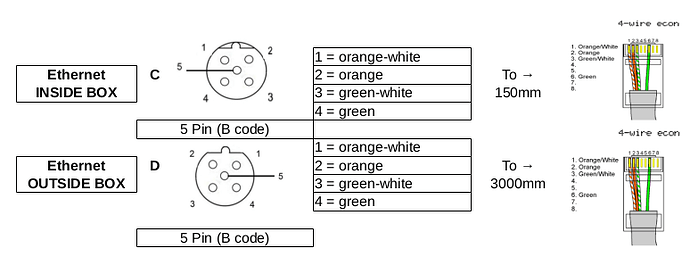Hello seismicMonitor; no problem! I’m here to help everyone on RaspberryShake-related matters. Also, apologies for the delay, as I was collecting information to offer you the most complete answers.
I’ll answer following your pointed list so that there is no confusion:
-
You can find information on our receivers (models included) here: GPS Antenna
-
No, as our Shake OS will automatically detect a connected GPS, starting to communicate with it for timing details. You can find more information here: NTP and GPS timing details
-
We use PPS to deliver the most accurate timing data to our Shakes.
-
This is a bit more complex, but it’s a situation we have encountered. You could use the item you have linked (you’ll have to do all the necessary testing and integration yourself), or you could do the following:
The question with a single GPS connected to multiple Shakes is always to maintain synchronized and correct timing between all Shakes. As you are working with multiple instruments, I would recommend synchronising the various devices’ timing via a single PC server. We have some documentation here on our manual, on the dedicated NTP page: NTP and GPS timing details — Instructions on Setting Up Your Raspberry Shake
The computer running the local NTP server can be any computer whatsoever: a regular PC, a laptop, or even another Raspberry Pi.
The basic idea behind this is that you have a local computer that has two things:
- a connected GPS device (or a constant internet connection) that governs the hardware clock on this computer
- running an NTP
server (not the client daemon) to which a Shake Pi will connect to use as its NTP server
In this way, you will have a single NTP server that will regulate the timing of all the connected devices instead of having multiple NTP connections for each device. This will give you an improved level of accuracy, ensuring that all your devices are in synchro with each other, and all their data can be promptly used together without the need to check for the aforementioned synchronization.
-
Yes, that would be the best practice, especially if the vault is airtight. Ensure that the connecting tube is free of kinks or sharp bends that will affect the pressure detection of the infrasound sensor. You can find more details on our dedicated page here: Raspberry Boom (RBOOM/ RS&BOOM) Infrasound Monitors
-
You can have something very simple to lock the Shakes in place after levelling them via the provided screws. I would recommend a solution similar to the one implemented by one of our users, described here: DIY Guide For A Home Raspberry Shake Vault - Raspberry Shake in the Securing the Raspberry Shake section.
-
As there is no way of precisely reading the input voltage of the Pi board, you have a couple of options to address this. It may be possible with the vcgencmd python package (vcgencmd) as one user has done something similar in the last post of this thread: Using under voltage warning for pi shutdown - Raspberry Pi Forums , but you will have to experiment.
As an alternative, executing this from the command line
sudo zgrep -a -i voltage /var/log/syslog*
will provide all the lines in the log files where voltage issues have occurred, such as undervoltage events too. You can monitor the logs with this, inside a script, and trigger a soft shutdown when a voltage line appears, making the Shake turn off safely.
If, instead, you want the solution to be completely external to the Shake itself, you will need some hardware (voltage monitor, a relay, and such) paired with software to handle the shutdown. You can utilize the unused GPIO pins (details here: Technical Specifications) to connect the various equipment you will be employing to achieve the desired result.
- Similar to my previous answer, if you want to keep everything external, you will need some microcontroller (that you could already have available), like an Arduino board, for example, that constantly monitors the battery output voltage and then activates a script to send a signal via relay to the RaspberryShake to turn on again. You could also implement a hysteresis mechanism to prevent frequent on/off switching when the battery voltage is around the threshold, and make sure that whatever monitoring equipment you’ll be using is isolated from the Shake to prevent any damage.
For both these two points, I reiterate, you will have to experiment with various tests to determine the best solution for your installations.
I hope that these answers have provided what you were looking for. Again, if you require anything else, I remain available.

